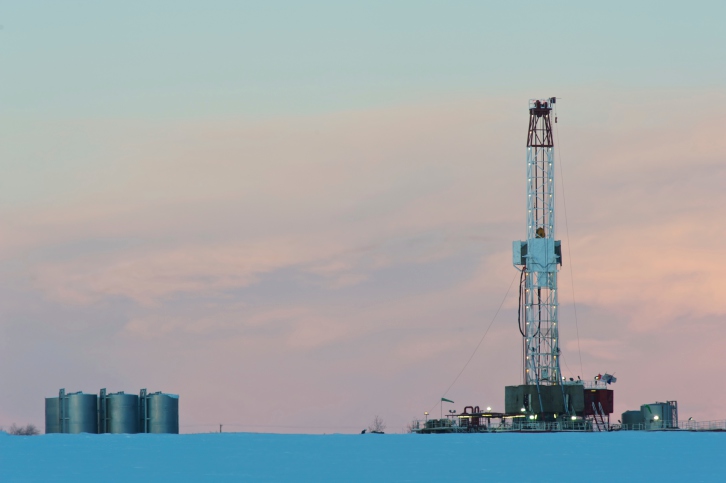Soaring oil and gas prices are driving a surge in new production, especially in Texas, where most drilling is undertaken on private lands.
The Railroad Commission of Texas (RRC) reported that it issued 38 percent more original drilling permits in February 2022 than it did in February 2021. The most recent Baker Hughes Co. rig count for the week ending April 1 showed a 44 percent year over year increase in drilling units in the Permian Basin covering west Texas and southeastern New Mexico. Horizontal drilling permits for new wells in the Permian Basin hit an all-time high in March, with 904 total permit awards reported Rystad Energy.
According to the reporting, the rise in new production would possibly been even greater were it not for supply chain issues driving up prices for and limiting availability of steel and other materials required for exploration and drilling, thereby dampening investment in new rigs.
Why Texas?
The question is whether the increased drilling is a national trend or something unique to Texas. Texas has some unique attributes that make a quick response to prices possible, says Gary L. Stone, executive vice president of Engineering for Five States Energy.
“There are a number of factors in play in the surge in Texas drilling,” said Stone. “A friendly regulatory environment to oil and gas is key, as is private land ownership – Texas has almost no federal land or leases.
“University Lands are state-controlled and part of the friendly environment, all contributing to making the most active drilling regions in the country in Texas,” said Stone. “The Permian, the Midland Basin, Eastern Shelf, and Central Basin Platform are very active drilling areas, with the Texas side of the Delaware Basin to the southwest is perhaps being the most active play in the country, and parts of the Eagle Ford shale basin is still very active.”
Production Hurdles Elsewhere
Other states with good oil and gas deposits have ownership and/or regulatory environments that make getting new production started there more difficult, says Stone.
“Activity in terms of rig count in New Mexico is a distant second to Texas – mostly the NM side of the Delaware – but they also are stunted by restrictions on federal lands,” said Stone. “Louisiana is active in the Haynesville, but North Dakota’s Bakken has slowed significantly, as has the Marcellus/Utica due to infrastructure restrictions.
“The DJ Basin in parts of Colorado, Kansas, Nebraska, and Wyoming, has minimal activity, as does the Montana’s and Wyoming’s Powder River,” said Stone. “Oklahoma has about as many rigs active as Louisiana.”
The regulatory environment accounts, in part, for the quick production expansion in Texas, but logistics also play a role, says Bette Grande, president of the Roughrider Policy Center.
“The setting in TX is friendly, but the increase in drilling activity in the Permian relative to other plays is likely more due to logistics,” said Grande. “Drillers today face headwinds from access to capital, supply chain constraints from pipe to parts, labor capacity, and inflation, so the close proximity of the Permian to gulf coast refineries and export facilities make Texas the best option for increasing the rig count.
“The Permian is the ‘low hanging fruit,’ but elsewhere where the fruit that is a bit higher, we will see,” said Grande.
Will It Last?
The uptick in production may be transitory, says Grande.
“Access to everything from casing to parts for equipment remains tight, and when you add in issues like access to capital and labor there are limits to continuing growth in the rig count,” Grande said. “The rig count in the Permian has increased steadily for the past year to around 300, but I don’t see the count getting back to 500 even if oil prices hold at current levels.
“The rig count in North Dakota may see a seasonal boost but it will top out at around 50 rigs, far below past levels,” said Grande.
Business discipline is also restraining new production, says Grande.
“Another important factor in tempering the surge in drilling activity is balance sheet discipline at the publicly traded independent operators,” said Grande. “So far most of these operators are maintaining their budget discipline and focusing on returning value to their shareholders even in the face of $100-plus oil.
“Some, mostly private, operators will boost production at these prices but they don’t have the acreage and capacity to have any significant long-term impact,” said Grande.
Supply Chain, Labor Issues
Despite supply chain issues increased drilling continuing so long as oil supply remains tight, says Stone.
“Supply chain issues are key to the moderation in drilling activity,” said Stone. “Pipe and other tangibles are in short supply, and pipe is expensive and needs to be ordered weeks-to-months in advance of drilling.
“Pumps, tanks, and other parts are also in short supply, but the largest shortage is in experienced drilling and service crews, because many were lost to other industries during the COVID downturn, so finding a rig, or other equipment, is tough,” said Stone. “That said, there will be little tail off until the world-wide supply and demand situation comes more into balance, something a cessation of hostilities in Ukraine will not immediately solve, especially as world demand increases as COVID lockdowns are increasingly lifted.”
Kevin Stone (kevin.s.stone@gmail.com) writes from Arlington, Texas
